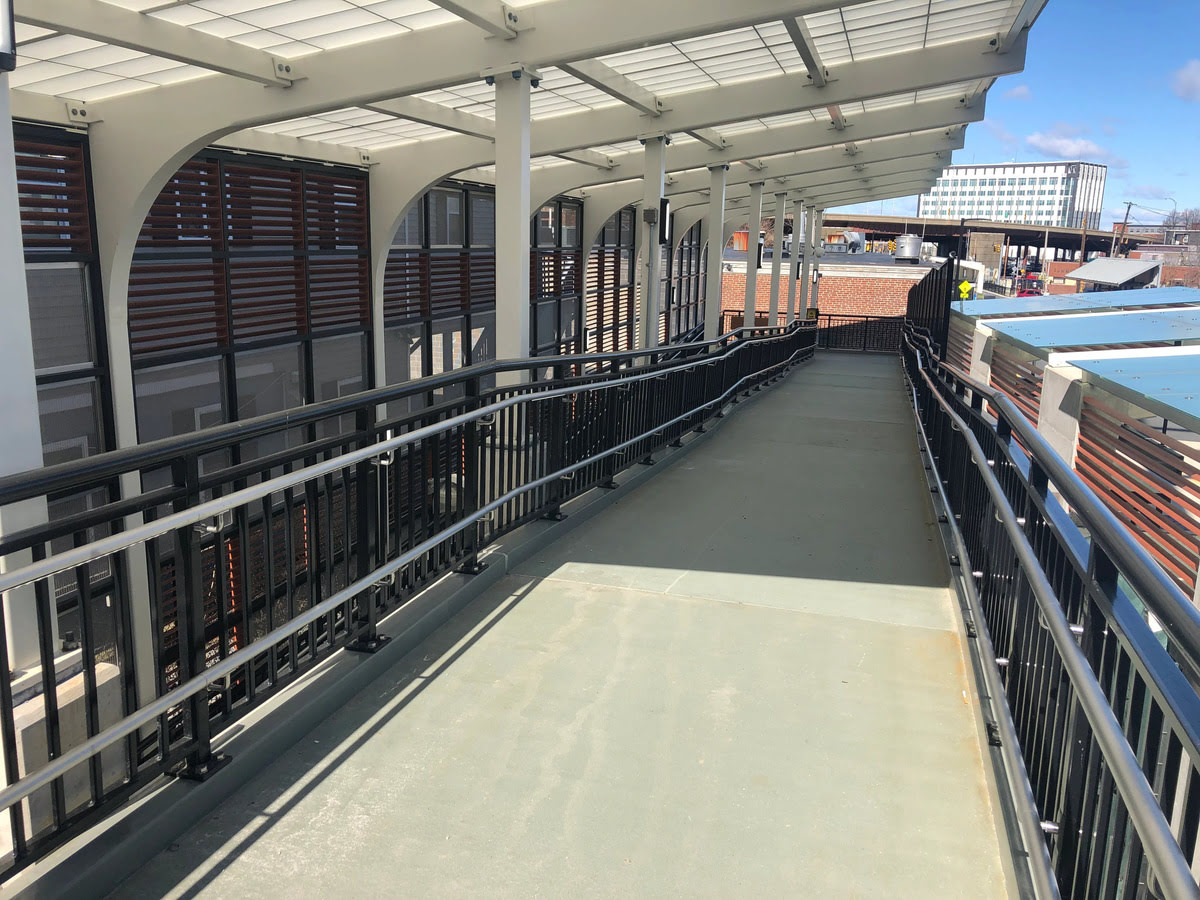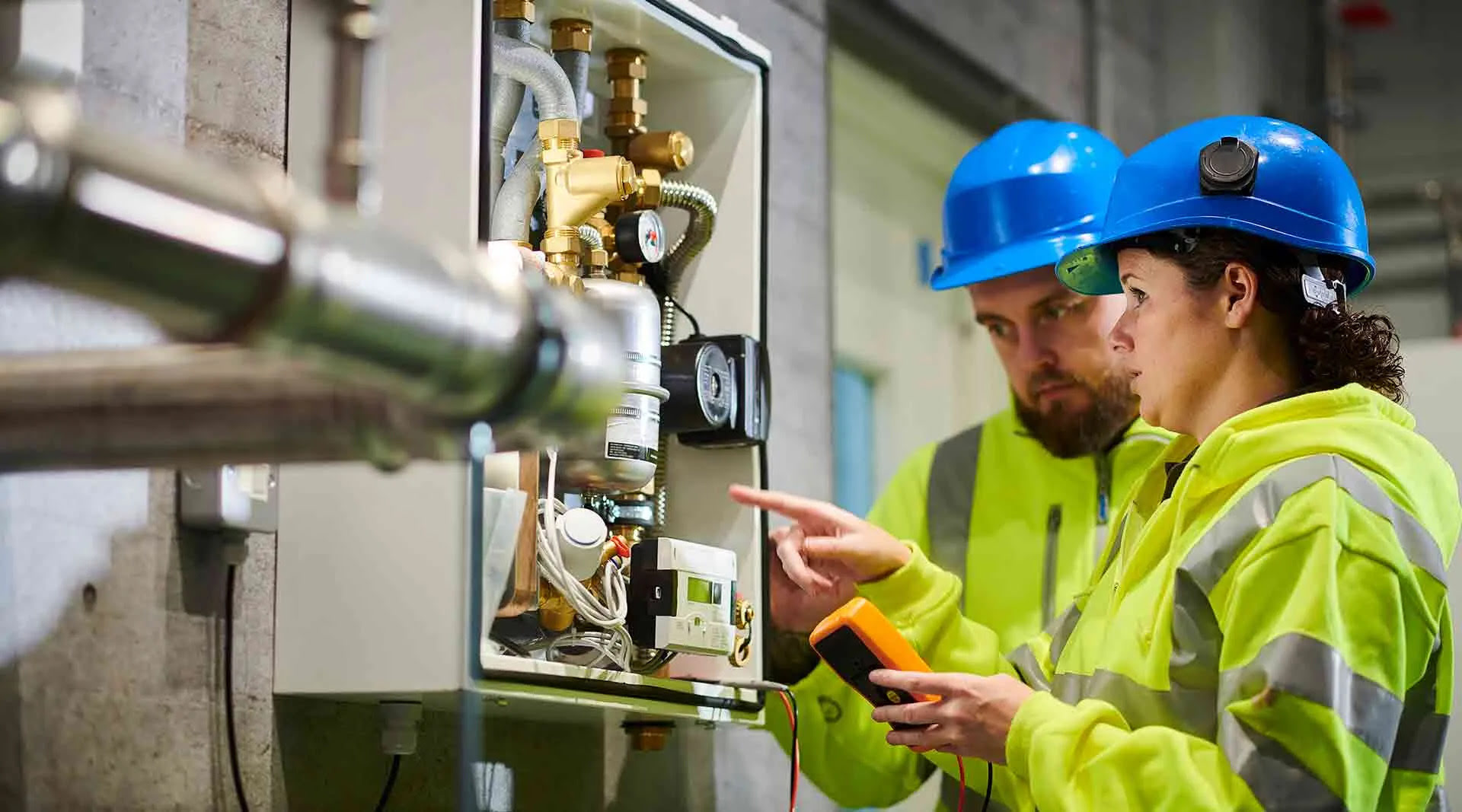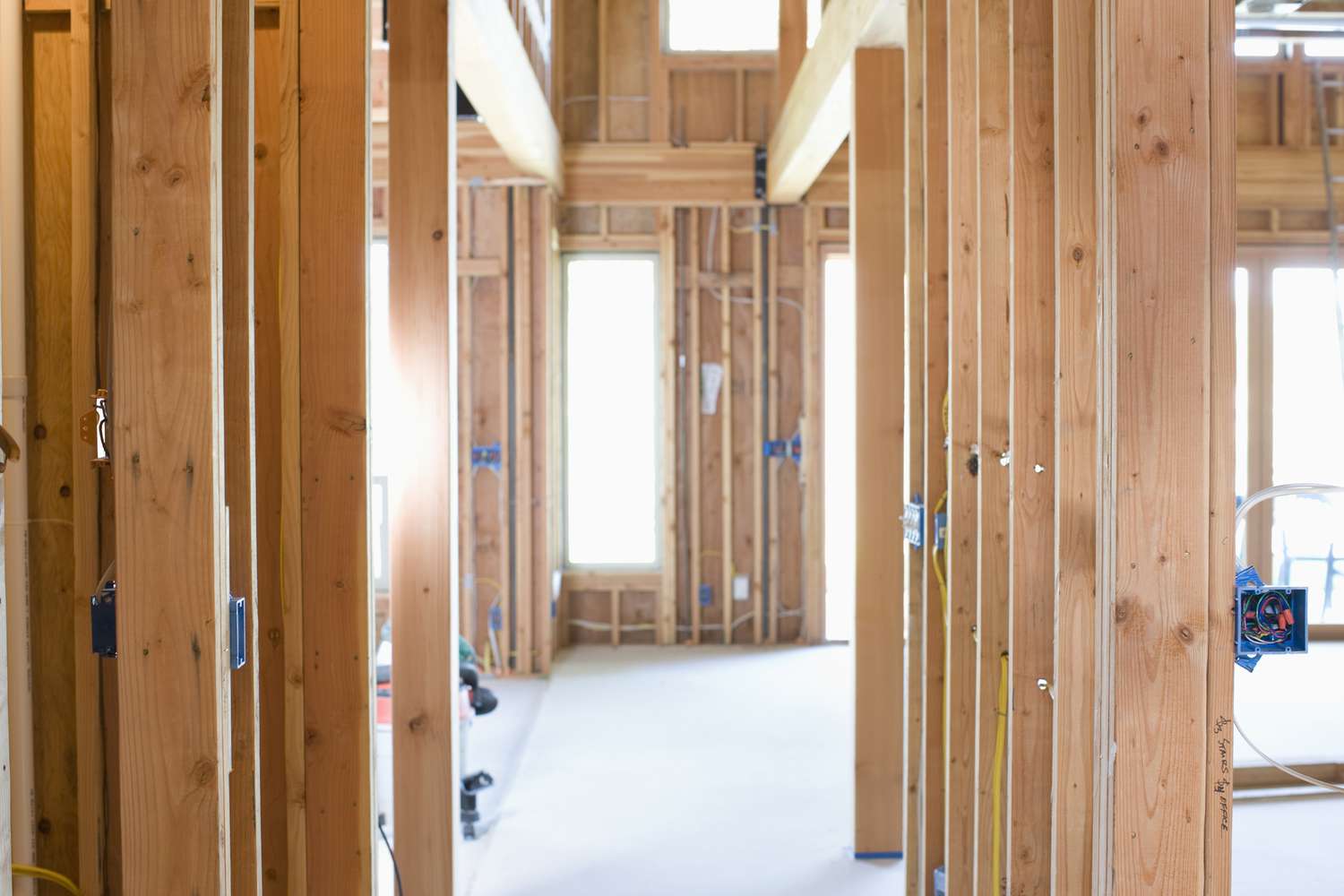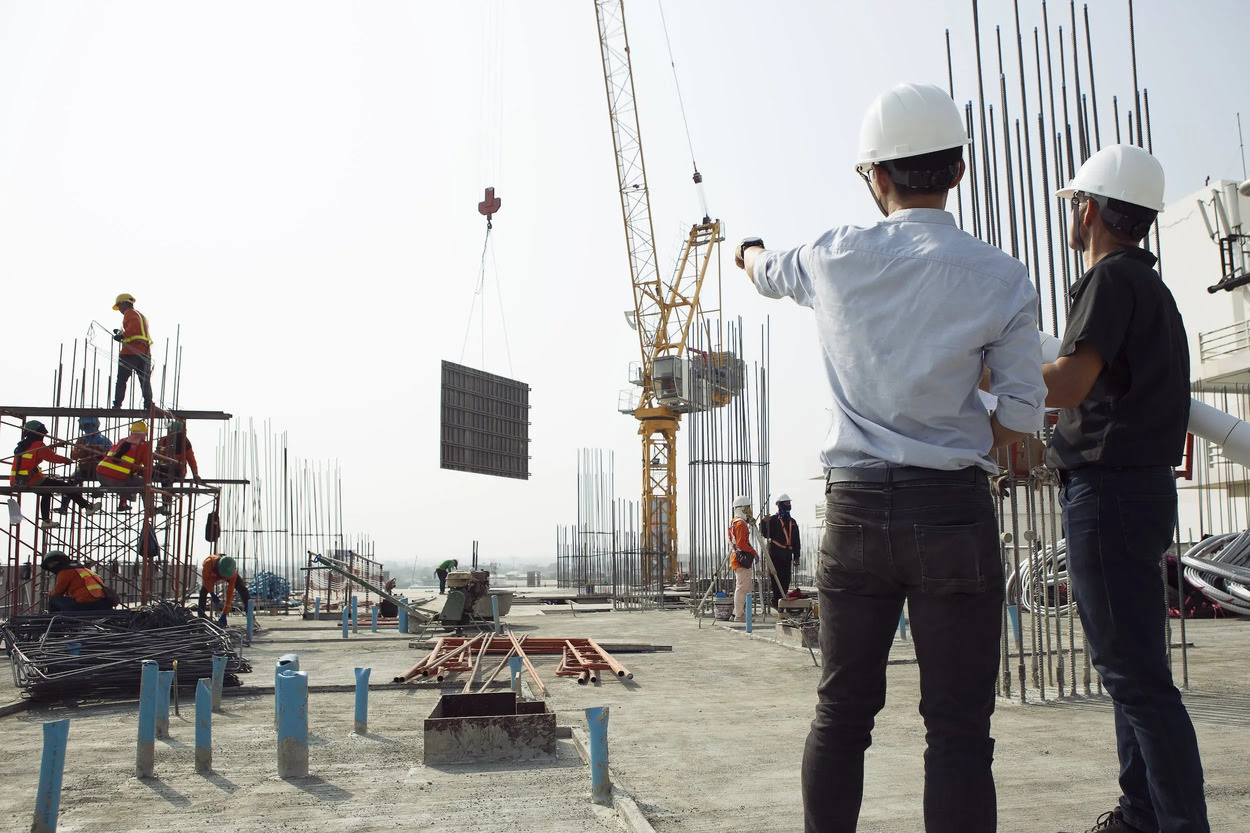Home>diy>Building & Construction>What Does “T&M” Mean In Construction


Building & Construction
What Does “T&M” Mean In Construction
Modified: December 7, 2023
"T&M" in construction stands for time and materials, a billing method frequently used in building construction projects. Learn more about its meaning and implications in the construction industry.
(Many of the links in this article redirect to a specific reviewed product. Your purchase of these products through affiliate links helps to generate commission for Storables.com, at no extra cost. Learn more)
Introduction
Welcome to the world of construction, where projects come to life, buildings reach for the sky, and the artistry of architecture meets the craftsmanship of construction. In this dynamic industry, contracts and terms are the backbone of every project, ensuring smooth operations and successful completion. One such term you often come across is “T&M,” which stands for Time and Materials. In this article, we will delve into the meaning, significance, and implications of T&M in construction.
When it comes to construction projects, estimating costs and allocating resources is a crucial aspect of the planning process. However, due to the unpredictable nature of certain projects, it can be challenging to accurately estimate both time and materials upfront. This is where T&M contracts come into play, offering flexibility and agility to adapt to changing circumstances.
T&M contracts are commonly used in construction projects where the scope, specifications, or duration of work cannot be precisely defined from the beginning. Instead, they allow for adjustments in the project’s requirements and provide a mechanism to account for the actual time spent and materials used in construction.
The core principle of a T&M contract is simple: the contractor is compensated based on the actual hours worked and the materials utilized, rather than a fixed price or a lump sum amount. This type of contract ensures that both parties are protected from unforeseen circumstances and have the flexibility to adapt to changes during the project’s lifecycle.
With a T&M contract, the contractor is responsible for accurately tracking and documenting the time spent on the project, including labor hours and any additional costs incurred. Similarly, the materials used for construction, such as concrete, steel, or lumber, must be recorded and verified to calculate the final project cost.
Notably, T&M contracts are most commonly utilized in construction projects where the scope of work is difficult to define in advance. This might be due to various factors such as complex architectural designs, geological uncertainties, or unique requirements that emerge during the construction process.
While T&M contracts offer flexibility and adaptability, they also come with their own set of advantages and disadvantages. Understanding these aspects is crucial for both contractors and clients to make informed decisions and manage T&M projects effectively. In the following sections, we will explore these in detail.
Key Takeaways:
- T&M contracts provide flexibility and transparency in construction projects with uncertain requirements, allowing for adjustments and accurate cost tracking to meet client needs and promote collaboration.
- Effective communication, meticulous tracking, and proactive management are essential for successful T&M projects, mitigating cost uncertainty, fostering trust, and delivering high-quality results.
Definition of T&M in Construction
Time and Materials (T&M) is a contract framework commonly used in the construction industry to accommodate the uncertainties and fluid nature of certain projects. In a T&M contract, the contractor is compensated based on the actual time spent on the project and the materials used, rather than a fixed price or a lump sum amount.
With a T&M contract, the focus shifts from strict adherence to predetermined project specifications and instead emphasizes the flexibility to adapt to changing circumstances. The contractor is responsible for accurately tracking and documenting the time spent on the project, including labor hours, equipment usage, and any other direct costs associated with the project.
One of the main advantages of a T&M contract is that it allows for adjustments and modifications as the project progresses, making it suitable for projects with evolving requirements. This flexibility ensures that the client’s needs are met, even in situations where the scope of work cannot be accurately defined at the outset.
The “time” component of a T&M contract refers to the actual labor hours expended on the project. This includes not only the contractor’s direct labor but also the hours worked by subcontractors, equipment operators, and other sources of labor utilized in the construction process. Proper documentation and record-keeping are essential to determine the correct billing process in a T&M contract.
In addition to time, the “materials” component of a T&M contract encompasses all the necessary resources and supplies required for the project. This includes construction materials such as concrete, steel, lumber, fixtures, and any other items directly consumed in the construction process. The contractor is responsible for providing accurate records and receipts to justify the materials used and associated costs.
It is worth noting that T&M contracts typically involve a negotiated labor rate and an agreed-upon markup for materials. This markup covers not only the direct cost of materials but also any indirect costs such as transportation, storage, or handling fees. The exact terms and conditions regarding labor rates and material markups are outlined in the contract between the client and contractor.
Overall, T&M contracts provide a flexible and adaptive framework for construction projects where the scope and requirements are subject to change. By basing compensation on actual time spent and materials used, both clients and contractors can effectively manage uncertainty and promote transparency in the project’s cost structure.
Types of Costs in T&M Construction Projects
When it comes to Time and Materials (T&M) construction projects, there are several types of costs that need to be considered and accounted for. These costs include labor, materials, equipment, and subcontractor expenses. Let’s explore each type in detail:
- Labor Costs: Labor cost is a significant expense in T&M construction projects. It includes not only the wages or salaries of the contractor’s own employees but also the labor costs associated with subcontractors or temporary workers. Labor costs are typically calculated based on the number of hours worked and the agreed-upon labor rate. Proper documentation, such as timesheets and payroll records, is crucial for accurately tracking and billing labor costs.
- Material Costs: Material costs refer to the expenses incurred for all the materials used in the construction process. This includes the cost of raw materials like concrete, steel, lumber, electrical components, plumbing fixtures, and other supplies needed to complete the project. The contractor must provide detailed documentation, including invoices, receipts, and delivery tickets, to support the material costs billed to the client.
- Equipment Costs: In T&M construction projects, equipment costs cover the rental or depreciation expenses of any tools, machinery, or specialized equipment used on the job site. This can include excavators, cranes, scaffolding, and other equipment necessary to carry out the construction tasks. The contractor should maintain records of equipment usage, rental agreements, or equipment ownership costs to accurately calculate and justify equipment expenses.
- Subcontractor Costs: T&M construction projects often involve subcontractors who perform specialized tasks or provide specific services. These subcontractor costs are considered a separate category of expenses and are typically reimbursed based on the actual time incurred or fixed amounts for specific deliverables. The contractor should maintain contracts, invoices, and other supporting documentation to account for these subcontractor costs accurately.
In addition to these primary cost categories, there may be other miscellaneous expenses incurred during the course of T&M construction projects. These expenses can include permits, inspections, travel costs, lodging expenses for out-of-town work, or any unforeseen costs that arise during the project. The contractor should keep detailed records and provide documentation to justify these additional costs when billing the client.
Proper management and documentation of all these cost categories are essential to ensure transparency, accuracy, and accountability in T&M construction projects. It is crucial for both the contractor and the client to maintain open communication and a mutual understanding of how these costs will be calculated, tracked, and reimbursed throughout the duration of the project.
Advantages and Disadvantages of T&M Contracts
Time and Materials (T&M) contracts offer a unique set of advantages and disadvantages for both contractors and clients in the construction industry. Understanding these pros and cons is essential for making informed decisions and effectively managing T&M projects. Let’s explore the advantages and disadvantages of T&M contracts:
Advantages of T&M Contracts:
- Flexibility and Adaptability: T&M contracts provide flexibility and adaptability when the scope and requirements of a project are uncertain or subject to change. This allows for adjustments and modifications during the construction process, ensuring that the client’s needs are met and reducing the risk of delays or disputes.
- Accurate Cost Tracking: T&M contracts provide a transparent and accurate method of tracking costs. Since the contractor is compensated based on actual time spent and materials used, there is greater visibility into project expenses. This helps both parties monitor costs and identify areas where adjustments or optimizations can be made.
- Risk Mitigation: T&M contracts shift some of the risks associated with construction projects from the client to the contractor. The client is not responsible for estimating project costs and materials upfront, reducing the potential for cost overruns or unforeseen expenses. This can lead to improved project budgeting and risk management.
- Increased Collaboration: T&M contracts foster collaboration and communication between the contractor and the client. The ongoing evaluation of time and materials allows for regular discussions and decision-making, creating a partnership mindset and ensuring that both parties are aligned in achieving project goals.
- Project Customization: T&M contracts provide the opportunity for customization and personalized service. Since the project scope can evolve during construction, the contractor can tailor their approach and allocate resources accordingly. This ensures that the final result meets the client’s specific requirements and expectations.
Read more: What Does Masonry Construction Mean
Disadvantages of T&M Contracts:
- Cost Uncertainty: One of the main disadvantages of T&M contracts is the potential for cost uncertainty. Since the final project cost is based on actual time spent and materials used, it can be challenging to predict the total budget at the beginning of the project. This uncertainty can make it difficult for clients to establish a fixed budget and plan their finances accordingly.
- Less Control for Clients: T&M contracts place a significant amount of trust in the contractor to accurately track and record time and materials. This means that clients have less direct control over the project expenses compared to fixed-price contracts. It is essential for clients to have confidence in the contractor’s capabilities and commitment to cost control.
- Administrative Burden: T&M contracts require meticulous record-keeping and documentation. Contractors must accurately track labor hours, materials, and other project expenses, which can become administratively burdensome. This additional administrative effort can potentially lead to delays in billing and project reporting.
- Potential for Disputes: Without a well-defined, fixed scope at the outset, there may be room for disputes between the contractor and the client regarding time spent, materials used, and associated costs. Clear communication, regular updates, and a shared understanding of expectations are crucial for mitigating potential conflicts and managing disputes effectively.
In summary, T&M contracts offer flexibility, accurate cost tracking, and adaptability for construction projects with uncertain or evolving requirements. However, they also come with the disadvantage of cost uncertainty, less control for clients, administrative burden, and potential disputes. It is important for both parties to carefully consider these factors and establish open lines of communication to ensure a successful T&M construction project.
Factors to Consider in T&M Construction
Time and Materials (T&M) contracts can be a beneficial framework for certain construction projects, but several factors need to be carefully considered to ensure successful outcomes. By taking these factors into account, both contractors and clients can manage the inherent complexities of T&M construction effectively. Let’s explore some key factors to consider:
Project Complexity and Scope:
It is crucial to assess the complexity and scope of the project before opting for a T&M contract. T&M contracts are most suitable for projects with uncertain or evolving requirements. If the project has a well-defined scope from the outset, a fixed-price contract may be more appropriate.
Open and Transparent Communication:
Effective communication is essential in T&M construction projects. Both the contractor and the client need to establish clear lines of communication and maintain an open and transparent relationship. Regular updates, progress reports, and meetings help ensure that the project is on track and align with the client’s goals and expectations.
Read more: What Does Turnkey Mean In Construction
Accurate Time and Cost Tracking:
Accurate tracking of time spent on the project, along with the associated costs, is vital in T&M contracts. Contractors must implement robust tracking systems to record labor hours, equipment usage, and other direct costs. Similarly, accurate documentation of materials used, including invoices and receipts, is necessary for transparent cost tracking.
Effective Change Management:
T&M contracts inherently involve changes and adaptations throughout the project duration. There should be a well-defined process for requesting and approving changes to the scope, along with mechanisms to document and communicate these changes to all relevant parties. This helps manage expectations and avoid scope creep.
Verification and Auditing:
Regular verification and auditing of the recorded time and materials are crucial for maintaining project integrity. Both the contractor and the client should conduct periodic audits to ensure that the recorded data accurately reflects the work performed and materials utilized. This helps build trust and accountability between the parties.
Contractual Clarity and Protections:
The T&M contract should clearly outline the roles, responsibilities, and expectations of both parties. It should specify how labor costs, material markups, equipment rentals, and subcontractor expenses will be handled and reimbursed. Legal protections and mechanisms for dispute resolution, such as arbitration or mediation, should also be included in the contract.
Read more: What Does NOC Mean In Construction
Vendor and Supplier Relationships:
Establishing strong relationships with vendors and suppliers is crucial in T&M construction projects. Ensuring reliable and timely delivery of materials and equipment is essential for project efficiency. Proactive communication with vendors and suppliers can help mitigate potential delays and ensure smooth operations.
By taking these factors into consideration, contractors and clients can navigate the complexities of T&M construction projects effectively. It is important to approach T&M contracts with a collaborative mindset, emphasizing open communication, accurate tracking, and mutual understanding to achieve successful project outcomes.
Best Practices for Managing T&M Construction Projects
Managing Time and Materials (T&M) construction projects requires careful planning, effective communication, and meticulous attention to detail. By implementing best practices, contractors and clients can ensure smooth operations, accurate cost tracking, and successful project outcomes. Here are some key best practices to consider:
1. Clearly Define Project Objectives and Scope:
At the project’s outset, clearly define the objectives, deliverables, and scope of work. This helps establish a solid foundation for the T&M contract and provides a framework for effective cost management. Regularly revisit and reassess the project objectives to ensure they align with the changing requirements.
2. Establish Clear Communication Channels:
Effective communication is vital in T&M projects. Establish clear communication channels and encourage open dialogue between the contractor, client, and all relevant stakeholders. Regular meetings, progress reports, and updates help keep everyone informed and aligned with the project goals.
Read more: What Does “Level” Mean In Construction
3. Implement Robust Time and Cost Tracking Systems:
Accurately tracking time spent and costs incurred is crucial in T&M projects. Implement robust time tracking systems, such as digital solutions or timesheets, to record labor hours and equipment usage. Similarly, maintain a comprehensive system to track and document all material expenses, including invoices, receipts, and delivery tickets.
4. Regularly Monitor and Review Project Progress:
Continuously monitor and review project progress to ensure it remains on track and within the agreed-upon budget. Regularly assess the recorded time and materials to identify any discrepancies or potential issues. Conduct periodic audits and reviews to maintain transparency and accountability.
5. Manage Change Orders Effectively:
Change orders are inevitable in T&M projects. Establish a clear process for managing change orders, including documenting and communicating any changes to the scope, costs, or timeline. Seek approval from the client before proceeding with any additional work to avoid disputes and maintain transparency.
6. Foster Collaborative Relationships with Vendors and Suppliers:
Develop strong relationships with vendors and suppliers to ensure timely and reliable delivery of materials and equipment. Maintain open lines of communication with them to mitigate potential delays or issues. Regularly evaluate vendor performance and consider alternate suppliers if needed.
Read more: What Does ISO Mean In Construction
7. Maintain Accurate Record-keeping and Documentation:
Accurate record-keeping is vital in T&M projects. Maintain all project-related documentation, including timesheets, invoices, receipts, change orders, and correspondence. These records serve as evidence for billing, progress tracking, and potential dispute resolution.
8. Conduct Regular Client Reviews:
Regularly review the project’s progress and performance with the client. Solicit feedback, address any concerns or issues promptly, and ensure client satisfaction. This fosters a collaborative relationship and helps build trust throughout the project.
9. Monitor Project Costs and Budgets:
Diligently monitor project costs and budgets throughout the project. Compare the actual costs against the estimated costs to identify any variations or cost overruns. Implement strategies to proactively manage and control costs, such as value engineering or material substitutions.
10. Emphasize Continuous Improvement:
Strive for continuous improvement in T&M projects. Regularly analyze project performance, identify areas for improvement, and implement lessons learned in future projects. Encourage innovation, creativity, and collaboration to enhance project outcomes and optimize processes.
By following these best practices, contractors and clients can effectively manage T&M construction projects, minimize risk, and ensure successful project execution. Effective communication, accurate tracking, and proactive management are key to navigating the complexities of T&M contracts and delivering high-quality construction projects.
Read more: What Does Furring Mean In Construction
Conclusion
Time and Materials (T&M) contracts play a crucial role in the construction industry, offering flexibility and adaptability to projects with uncertain or evolving requirements. By compensating contractors based on the actual time spent and materials used, T&M contracts provide a transparent and effective framework for managing construction projects. However, it is important to carefully consider the advantages, disadvantages, and best practices associated with T&M contracts to ensure successful project outcomes.
One of the key advantages of T&M contracts is the flexibility they offer in adapting to changing circumstances. This flexibility allows for adjustments in project scope and requirements, enhancing the client’s ability to meet their needs. Additionally, accurate cost tracking and increased collaboration between the contractor and client are significant benefits of T&M contracts. These factors promote transparency, accountability, and a shared understanding of project goals.
However, T&M contracts also come with their own set of challenges. The potential for cost uncertainty and lesser control for clients requires diligent cost tracking and effective communication. Contractors must maintain accurate records and documentation to justify time and material expenses, avoiding disputes and maintaining trust with the client.
Several factors should be considered to effectively manage T&M construction projects. This includes assessing project complexity, establishing clear communication channels, implementing robust time and cost tracking systems, managing change orders effectively, and fostering collaborative relationships with vendors and suppliers.
By following best practices such as clearly defining project objectives and scope, regularly reviewing project progress, and maintaining accurate record-keeping, contractors and clients can navigate the complexities of T&M contracts with confidence. Effective communication, proactive management, and continuous improvement are integral to successful T&M projects.
In conclusion, T&M contracts offer a dynamic and adaptable framework for construction projects, allowing for flexibility in uncertain or evolving circumstances. By considering the advantages, disadvantages, and best practices discussed in this article, both contractors and clients can effectively manage T&M construction projects, maximizing project success by delivering high-quality results on time and within budget.
Frequently Asked Questions about What Does "T&M" Mean In Construction
Was this page helpful?
At Storables.com, we guarantee accurate and reliable information. Our content, validated by Expert Board Contributors, is crafted following stringent Editorial Policies. We're committed to providing you with well-researched, expert-backed insights for all your informational needs.










0 thoughts on “What Does “T&M” Mean In Construction”